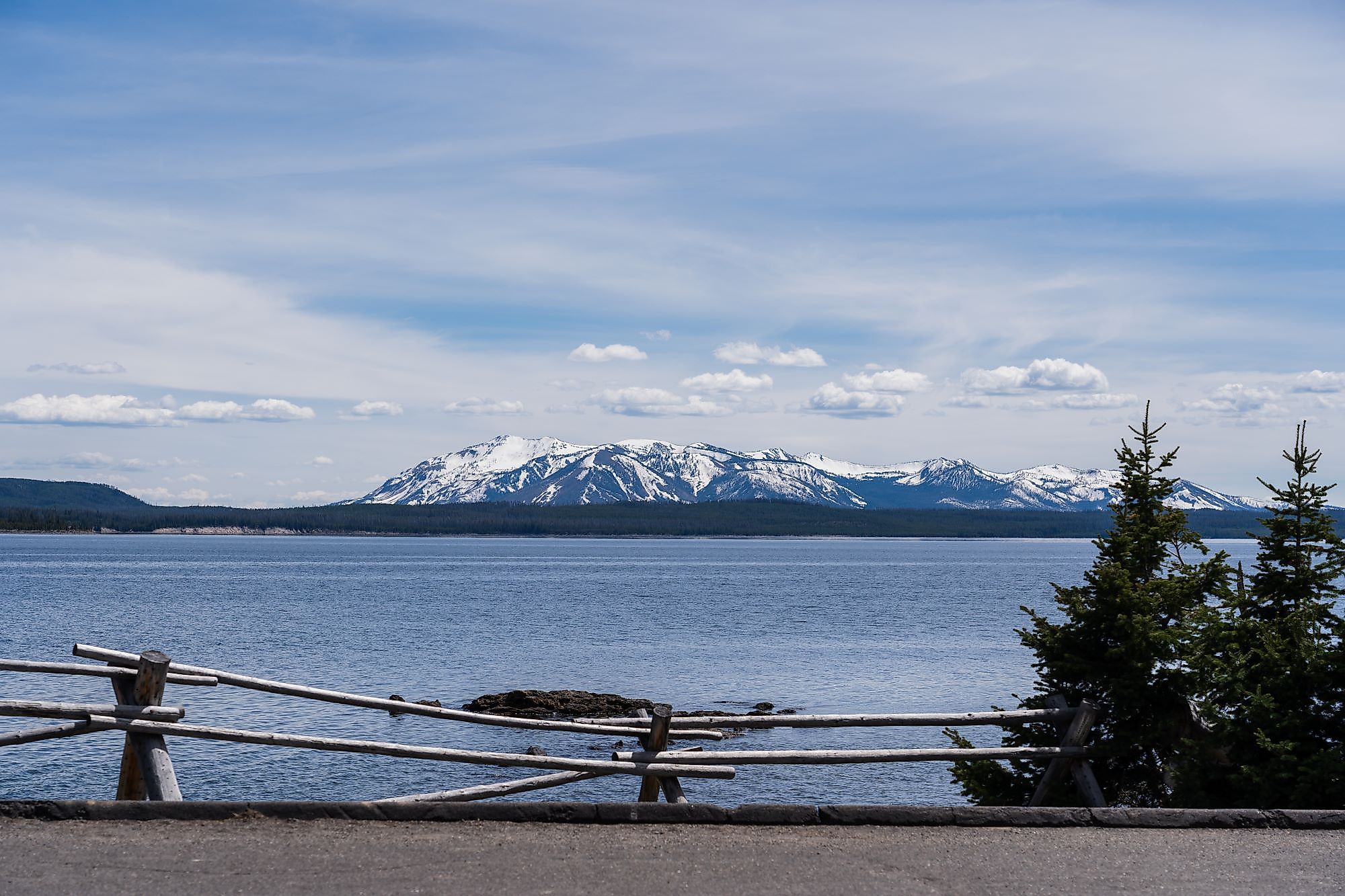
Yellowstone Lake
Yellowstone Lake is the biggest water body situated in Yellowstone National Park in the northwestern part of the US State of Wyoming. It is also North America's largest freshwater lake, located above 2,100 m. Besides being home to several trout fishes, Yellowstone Lake and its surroundings also support many aquatic avian species.
Geography Of Yellowstone Lake
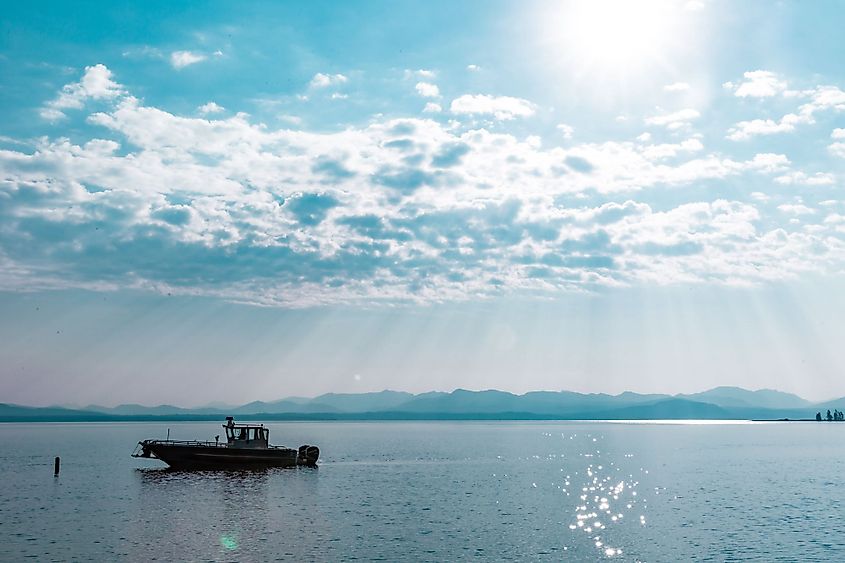
Covering a surface area of 350 sq. km, Yellowstone Lake has a length of about 32 km, a maximum width of 24 km, and a shoreline of 180 km. Yellowstone Lake has an average depth of 42 m and reaches a maximum depth of 120 m. Yellowstone Lake is also North America's largest high-elevation lake, situated at an elevation of 2,357 m. Yellowstone Lake receives water from several small streams and rivers, including the Yellowstone River, which enters the lake in the southeast and empties it at the northern end.
Climate Of Yellowstone Lake
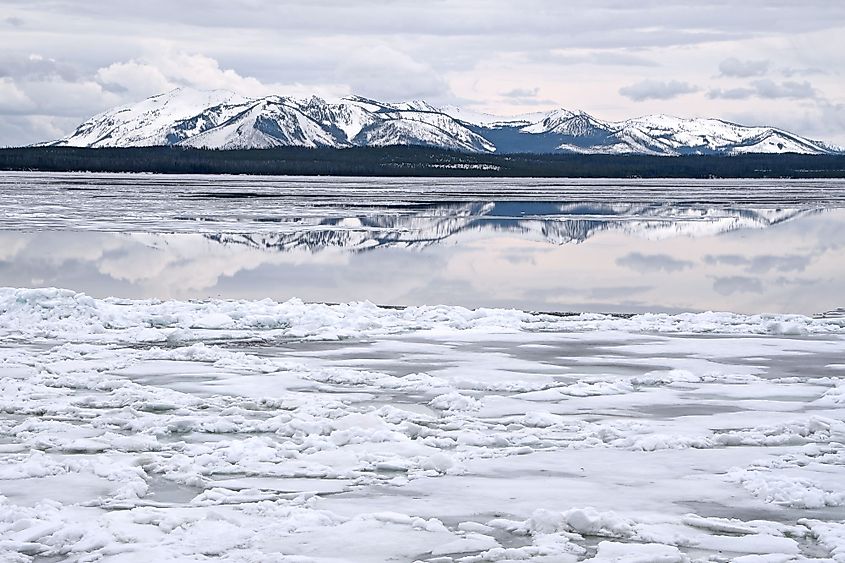
The lake's water is chilly all year round, even though hot water is now known to enter the lake from vents found at various locations along the bottom. In winter, significant portions of the lake are covered by about 0.91 m thick ice. Every year, Yellowstone Lake gets frozen by the beginning of December and remains frozen till May end or the beginning of June. With a year-round average water temperature of 41°F (5°C), Yellowstone Lake is always chilly, so swimming in this lake is not advised.
Geology Of Yellowstone Lake
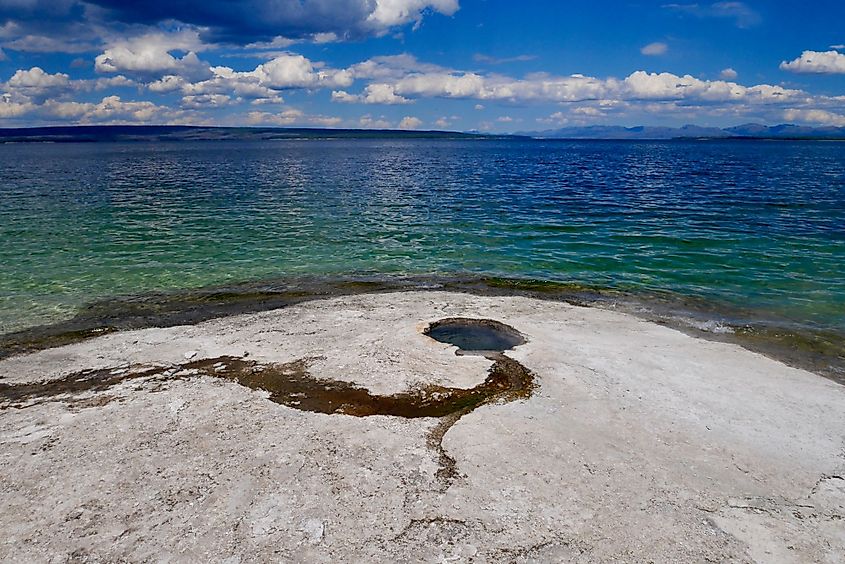
Approximately 640,000 years ago, devastating volcanic eruptions in the region resulted in the formation of a massive crater named the Yellowstone Caldera. The northern two-thirds portion of Yellowstone Lake occupies the caldera's southeastern part. The lake basin is presently skewed southwards due to the rise and fall of surrounding resurgent domes (the sites of volcanic vents), which has led to the growth of beaches along the northern coast and flooding in the lake's southern arms. About 150,000 years ago, a small eruption in the caldera resulted in the formation of the West Thumb Geyser Basin in the lake's southwestern area. The West Thumb region also contains many geothermal features, including geysers and hot springs, which are assumed to come from a nearby, relatively shallow magma source.
History Of Yellowstone Lake
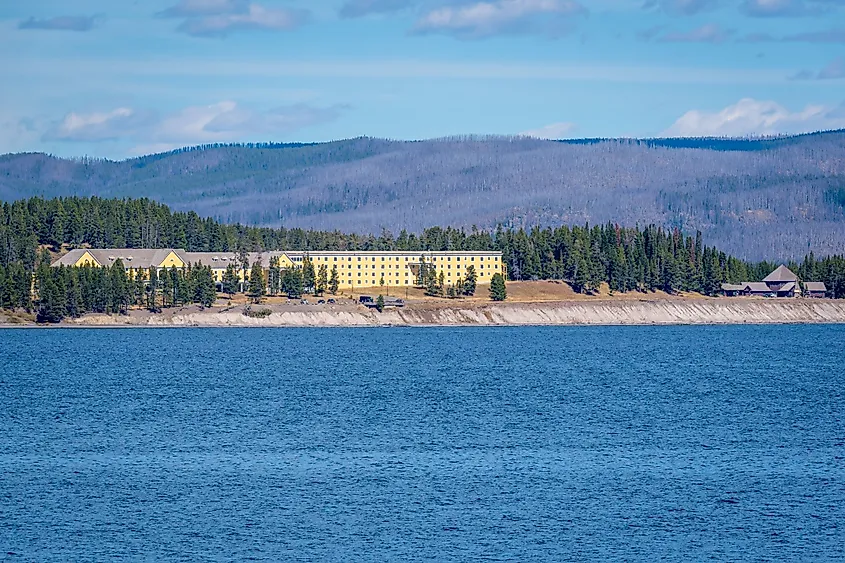
Contrary to popular belief, the Grand Canyon of Yellowstone's rich rhyolite lavas were not the source of Yellowstone's name. These lavas were chemically changed by reactions with steam and hot water to produce the striking yellow and pink hues that can be seen today. Instead, the name was given to yellow sandstones along the Yellowstone River's shores in eastern Montana, many hundred miles downstream and northeast of the park, by Native Americans as early as 1805. In addition to being thought to be the headwaters for two of the three main river systems in the intermountain west at the time, Yellowstone Lake was crucial to the exploration of the Rocky Mountain west.
John Colter entered Yellowstone as the first non-Indian explorer from the south along the Snake River. Colter continued north, passing a sizable lake on its western side before heading along the Yellowstone River. The lake is referred to as Eustis Lake on some William Clark maps, and at the beginning of the 19th century, it was also referred to as Sublette's Lake. Captain Washington Hood, a topographical engineer for the U.S. Army, first formally used the name Yellowstone Lake on maps of the Oregon Territory in 1839.
Ecology Of Yellowstone Lake
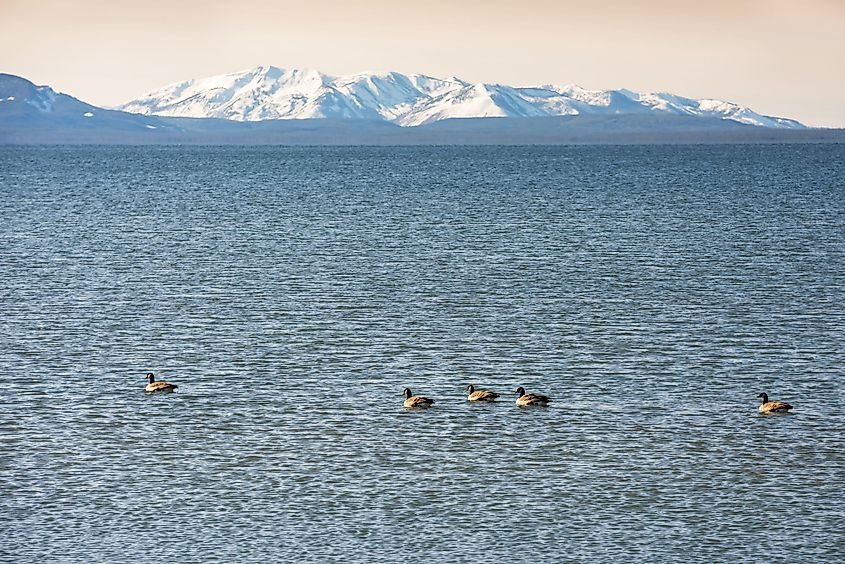
The majority of North America's wild cutthroat trout are found in Yellowstone Lake. Scientists believe that the fish formerly swam across the Continental Divide at Two Ocean Pass from Yellowstone Lake to the Pacific Ocean via Outlet Canyon and the Snake River. Currently present in Yellowstone Lake and posing a threat to the survival of the native cutthroat trout is the alien lake trout, an illegally introduced species. Other species of cutthroat trout, such as the west-slope cutthroat, can be found in Yellowstone streams in addition to the Yellowstone cutthroat trout that live in Yellowstone Lake.
In addition to fishes, several different duck species, Canada geese, sandhill cranes, common loons, American white pelicans, and the rare trumpeter swan can all be found in Yellowstone Lake and its surroundings. Several wild animals are also found in the lake area including bison, elk, bighorn sheep, beavers, short-tailed weasels, and river otters.
Is Yellowstone Lake Dangerous?
Yellowstone Lake is shifting southward due to the revival of the Sour Creek dome, which is located just north of Fishing Bridge. Now, the lake's northern arm has larger sandy beaches, and the southern arms have flooded sections. Hydrothermal waters nearing the boiling point in Yellowstone are extremely dangerous. Some of these thermal features are visible on the surface, but most of this geothermal reserve of hot water is hidden beneath the fragile ground. Surprisingly, entering a thermal feature will inevitably cause third-degree burns and possibly death. The area's diverse wildlife presents another threat. Keep a safe distance from bison, elk, bears, and other wild animals found here.











